Caçoila: Portuguese Pork in a Massachusetts Bun
New England doesn’t seem like the type of place Portuguese immigrants would gravitate towards. The climate, with hot humid summers and cold, brutal winters, is nothing like the mild, subtropical near-Mediterranean climate of Portugal. Yet the highest concentration of Portuguese-Americans in these United States exists in the greater Boston area, in Massachusetts and Rhode Island towns like New Bedford, Dartmouth, Taunton, East Providence, Pawtucket, and Fall River, which with a population of only 93,000 deserves some kind of plaque for having the most different and interesting local sandwiches per capita. There is of course the Chow Mein sandwich, as covered by the Tribunal in 2015, and the absolutely unique Hot Cheese sandwich that we hope to cover early next year.
Add to that list the Portuguese–well, Portuguese-derived–Caçoila. Caçoila is a slow-cooked meat dish from the Azores, an archipelago about 900 miles off the coast of Portugal. Usually made with pork, though the American version might use beef or other meats instead, Caçoila is flavored with garlic, citrus, allspice, paprika, bay leaf, wine, and other spices. The word is pronounced something like ka-SOI-la, or sometimes ka-SUR-la, and the dish is named after the ceramic or metal type of oven dish it was traditionally cooked in, which are called caçoila, caçoula or sometimes caçarola.
Casserole?
In Portugal, the dish might also include potatoes and tomato pulp, with additions of organ meat. It might have the chunks of pork left whole, to be served as more of a stew. In Massachusetts, caçoila is made meat–forward without the potatoes or additional vegetable matter, cooked until falling-apart tender, shredded, and served as a type of pulled pork sandwich.
I read many recipes, as is my standard practice, found the things I liked most about each, and combined them with this result:
Caçoila
Ingredients
- 4 lbs pork butt cut into ~1.5" cubes
- 1 cup Madeira wine
- 1 lemon
- 1 orange
- 1 tbsp sweet smoked paprika
- 1 tsp allspice
- 1/2 tsp cinnamon
- 1/2 tsp nutmeg
- 1/4 tsp clove
- 1 tsp kosher salt
- 1 tsp black pepper
- 2 bay leaves
- 5 cloves garlic minced
- 1/4 cup olive oil
Instructions
- Pour the wine into a large mixing bowl. Zest both the lemon and the orange into the bowl, then squeeze the juices of both into the bowl as well. Add the olive oil, minced garlic, and all spices to the bowl and mix well
- Add the cubes of pork to the bowl and mix to coat thoroughly. Transfer to a gallon-sized ziploc bag and refrigerate at least overnight

- Transfer pork and marinade to a Dutch oven, cover tightly, and cook in a low oven, 250° F, for 3 hours

- Remove from oven, remove lid, and cook over medium heat on the stovetop until the sauce has reduced and the meat crumbles easily into shreds

- Serve in sandwich rolls such as Kaisers or Portuguese rolls with hot sauce and mustard on the side for people to add if they'd like.

I mixed this marinade and started hte pork soaking in it on a Sunday afternoon in my own home. By Tuesday, when I cooked the pork, I was hundreds of miles away visiting with family at my uncle’s place in Central Wisconsin. So you may not recognize the pans or plates or tablecloth, but I appreciate my uncle’s hospitality and I wish I had plates just like these. They are spectacular.

Searing the pork before stewing it–making it more of a braise–might give some additional flavor. I’m not certain it would help the texture though. The slow-cooking of the pork butt–from which I removed the largest pieces of fat cap before cooking–in its marinade allows the pork to practically fall apart entirely on its own as the liquid reduces, intensifying the citrus-spice flavor of the marinade and allowing the silken strands of soft pulled pork to trap what sauce remains in a kind of meat matrix.



From my experiences with Portuguese sandwiches, I expected this to be served with piri-piri sauce and sweet mustard in papo seco rolls. And from the photos of caçoila sandwiches I’ve seen in google searches, some kind of crusty bread roll, oblong in shape with a split top very much like a papo seco, is often used. However, I’ve also seen many of them served in plain round hard rolls, or Kaisers, or torpedos, or sesame seed buns. In Central Wisconsin, Kaiser rolls were about the best I could do.



As for piri-piri sauce, the hot sauce shop located in Wisconsin Dells (and elsewhere–many elsewheres) has a wide variety of hot sauces on offer, but piri-piri isn’t one of them. I thought this Mango Habanero hot sauce might go well with the citrus flavors of the pork.
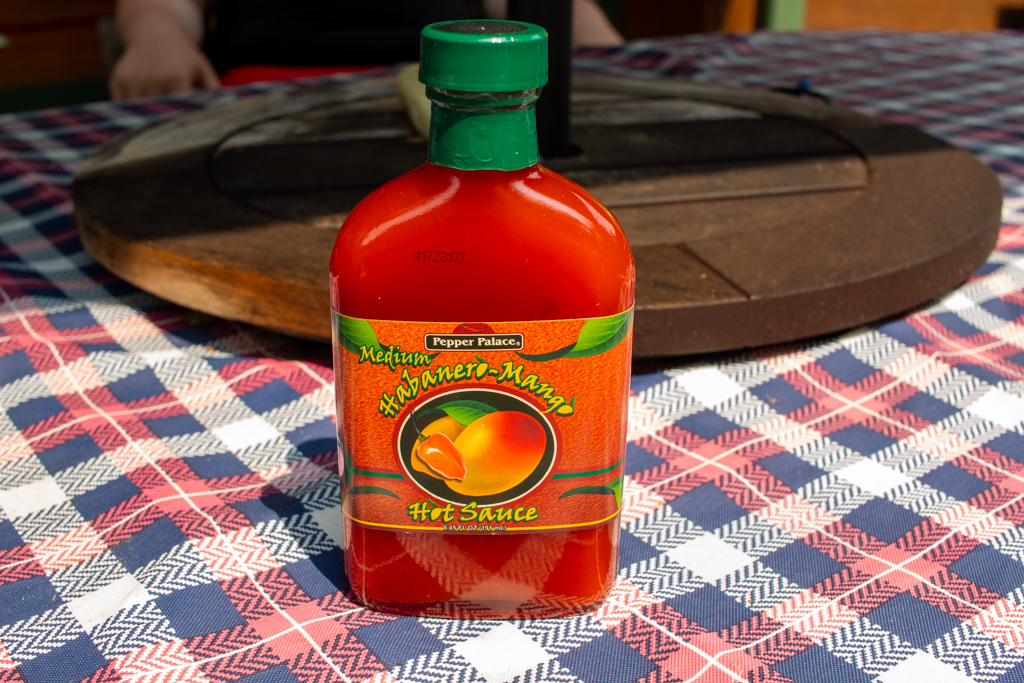
I can’t say that I was wrong about that per se, but the hot sauce itself wasn’t particularly interesting. (I tried again later with another sauce I bought there called Aztec Red Habanero Salsa Picante and it was better. Then I accidentally knocked it off the table and the bottle broke and I’m no longer in the Dells and their website is out of stock of that one hot sauce so I guess I’ll never get to have it again.)



As I mentioned, piri-piri sauce and sweet Portuguese yellow mustard would be appropriate for a few different Portuguese sandwiches. But this isn’t really a Portuguese sandwich, per se. It’s a Portuguese dish that has been adapted into a sandwich filling by Portuguese-Americans in New England. Would piri-piri sauce and sweet mustard work here? I’m sure it would, and the result would be very much the saucier, thin-sliced style of Bifana. But from what I can tell, those Portuguese-Americans in New England don’t put mustard and hot sauce on these sandwiches. They use roasted red peppers, maybe. Out of the dozens of photos and posts I reviewed, I saw one with cooked onions in the sandwich–they looked as if they’d been cooked in the marinade with the pork–and 2 with some type of salad or greenery added. The vast majority were simply shredded pork with its sauce in a crusty bread roll.
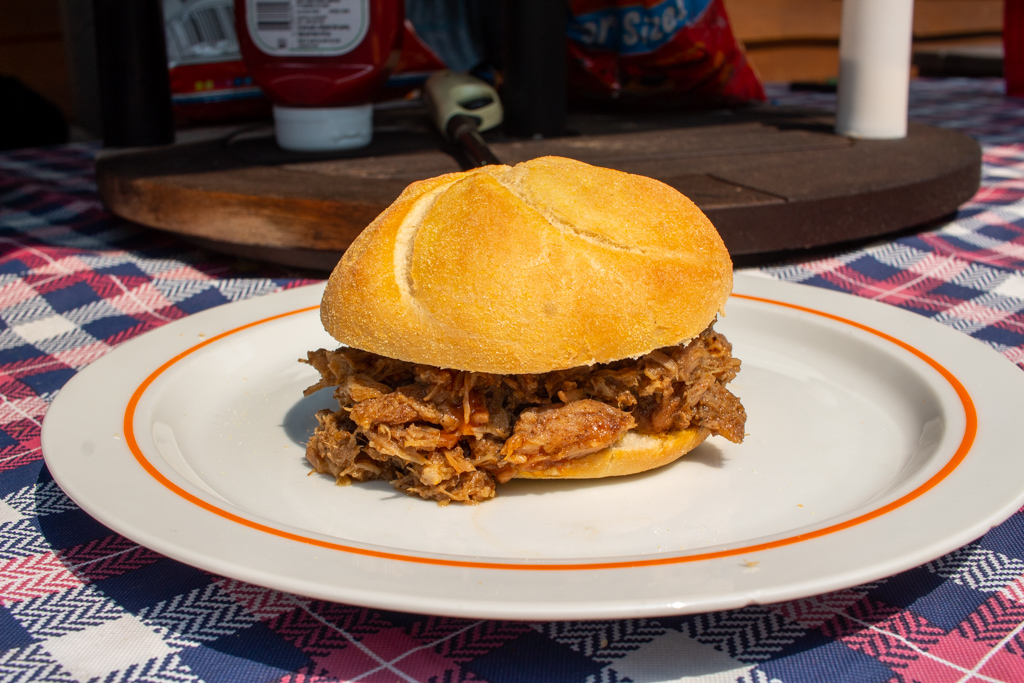
As for the pork, it is soft and moist, its juices soaking into the sturdy Kaiser rolls without quite soaking through them. It tastes brightly of oranges and lemons and strong wine and warm spices, like Portuguese Sangria in meat form, but with garlic.
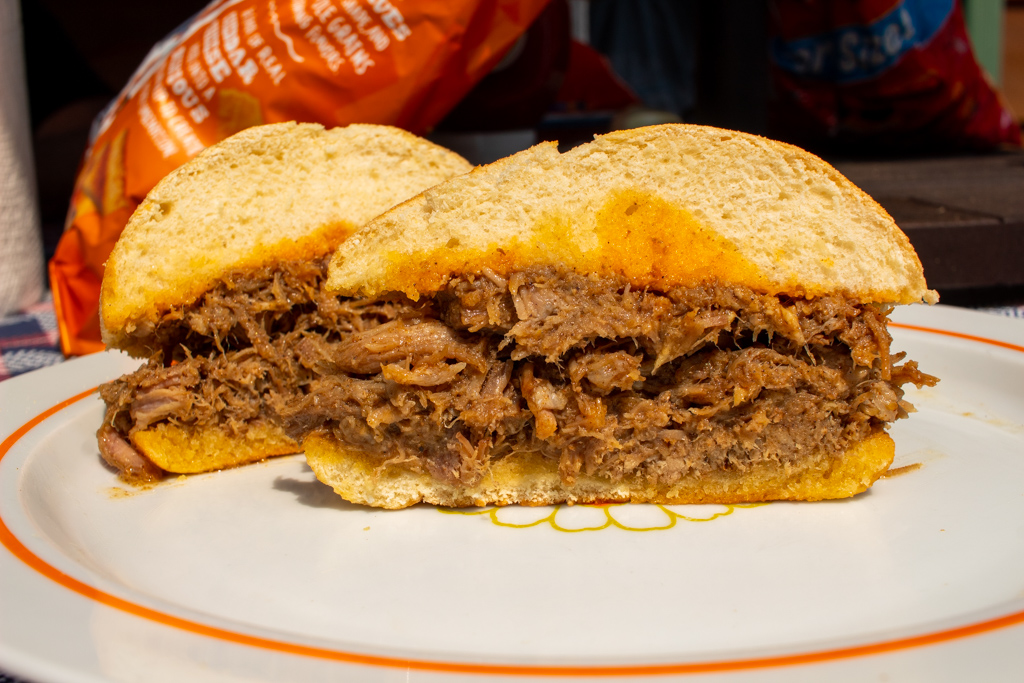
I will almost certainly try this again. The recipe could easily be made in a slow cooker for an easy weeknight dinner, though it would require a stovetop step at the end to reduce the sauce–it concentrates the flavor and makes the pork less sloppy. I also think it could use something additional to cut through the richness of the pork, some pickled onions maybe, or that mustard I decided not to use.
Any Portuguese-Americans from Massachusetts out there reading? I’d love to hear how you make this in your family. Please comment below!

I like sandwiches.
I like a lot of other things too but sandwiches are pretty great



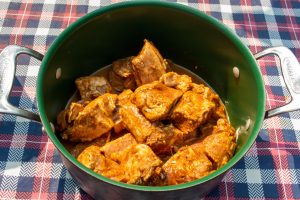
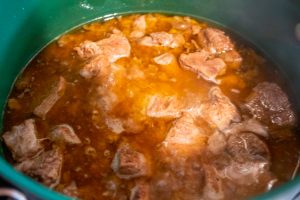
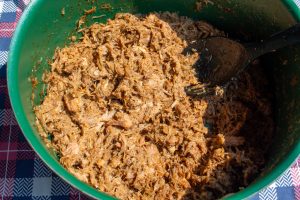
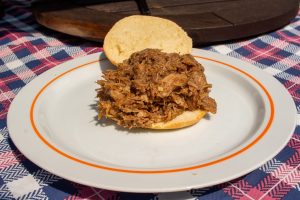









i’ve fallen in love with this one piri piri hot sauce so i thought i’d share a link to it… 🙂
https://heatonist.com/products/piko-riko-microsaucerie-piko-peppers
I lot of Portuguese family recipes include a splash of apple cider vinegar to cut the richness of the pork — in my opinion, the addition of the vinegar makes for a more well-balanced flavor.
My family is from Flores and Sao Miguel. I never really got to know them because of a divorce in the1920s, but my mom still made some of the food. I live in Kansas and it is rare anyone knows much about the Azores much less about the foods. My mom moved back to New Bedford after 50 years in the midwest and on a visit to her, mom picked up Cacoila from the Portugese deli (not sure what she called it)…I was SOLD on first bite. My dad called the buns it was served on “punzings”…but dad was German and not sure if he was talking Azores or Prussia. Anyway, got a recipe from one of the church lady friends from my mom. As a born and bred Midwesterner, living in Ohio, Indiana, Missouri and now Kansas, I make Caccoila every few years to keep in touch with my New Bedford/Fall River Azorean family. It was also an instant hit with my kids (young adults). I give them a choice to eat it on a crusty white bread bun, or on rice, in a pasta bowl. The rice is the same rice I got from a recipe for Fejouada (spelling). Living in the land of national pride of BBQ, it is fun to let the BBQ junkies here taste the Caccoila and try to figure out what I put in it. I do start with soaking the chunks of pork or beef (usually a loin roast) in Portuguese wine and pepper flakes for a day. The recipe I got from mom is a little different, but the flavor of the allspice and cinnamon is the kick. I now use the same spices in my midwest chili … and let them try to figure that out!!
Thanks for the blog post. Brings me back to my Azores roots since I’m one of the last ones in my line.
Just had one of these sandwiches at Moby Dick Brewing in New Bedford, MA. Delicious and very different. I decided to make my own version this weekend and I am using your recipe with some variations. Cutting the butt into strips, and using the dry spices as a rub, then going to BBQ over pecan wood for a couple hours at 250. Then cut into chunks, add to the liquids and bay leaf and braise til tender. Will puree the entire orange and lemon, the bitterness of the pith goes away when cooked for a while. Since I make a lot of different hot sauces and condiments I am kind of torn, the sandwich I had at the brew pub had plenty of flavor and did not need any. Will play that by ear. Thanks for the recipe!